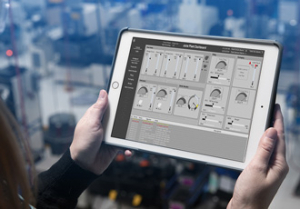Can software solve manufacturing's great planning crisis?

Big data has become ubiquitous with manufacturing. A planner’s dream, you would assume. Unfortunately, today’s planners are experiencing information overload. Here, Martyn Williams, Managing Director at COPA-DATA UK explains why, to capitalise on the wealth of data available, planners in manufacturing need data analysis tools that are fit for purpose.
Manufacturing planners have access to a colossal volume of data. This can include everything from raw materials and their price fluctuations, human resource and personnel records, right down to the minutest operational data for machinery on the factory floor.
Interesting? Yes. But not always necessary.
Potential for planners
Data has a breadth of uses for planners. Let’s imagine a pharmaceutical manufacturing facility has received an order for a batch of customised medication. The order requires a tight turnaround and needs to be planned meticulously to avoid delays. In this scenario, there are plenty of examples of where data can improve planning.
Inventory data, for example, could be used to determine which ingredients are required for the medication and their respective processing times. Using this knowledge, the planner can determine the optimal handling order. For unavailable ingredients, Enterprise Resource Planning (ERP) and supply chain data can be used to scour suppliers to deliver the ingredients on time and for the best price.
Looking more intricately at the production process, personnel data can also be used to monitor shift patterns, and identify those experiencing high levels of worker absenteeism. With this knowledge, a planner could avoid scheduling tight production deadlines during these shifts. For the life sciences sector, which often uses ingredients with limited lifespans, this careful planning can also help to avoid instances of expired production materials and therefore, lost revenue.
Sounds ideal, doesn’t it? But, without the correct tools, this isn’t feasible.
Without technology to capture, evaluate and analyse the breadth of data available, planners simply don’t have the time to achieve such a comprehensive overview. To enable this, planners must use automation.
Knowledge is power, not data
A common issue of data capture in the manufacturing realm is the variety of communication protocols in use. Communication standards can differ greatly in separate areas of the supply chain. In fact, they even vary between machinery placed side-by-side on the factory floor - that’s not to mention the integration of enterprise software. For these environments, independent software is essential.
Independent software - like COPA-DATA’s zenon - can be deployed seamlessly in even the most heterogeneous of industrial landscapes. With over 300 native drivers and communication protocols, the software has been developed to speak lots of different languages. In our pharmaceutical manufacturing example, this could range from down time data from a Manufacturing Execution System (MES), right through to enterprise data such as in the Bill of Materials (BOM) and demand forecasts.
Automating data collection is the first phase. However, it is crucial to remember that data isn’t power; knowledge is. The next step is making this data actionable.
Visualisation and decision making
Gaining a full overview of a product’s data, from raw ingredients right through to delivery, is a planner’s dream. However, it is important that visualisation tools can also cut out non-essential data too.
An ideal data interface should be adapted to the requirements of the respective user, whatever their role within the organisation. For instance, a planner would benefit from inventory and production schedule data, while a production operative may need to see Overall Equipment Effectiveness (OEE) and machine performance. With zenon, customised interfaces are easy to generate.
Using a visual interface, planners can then use this data to make decisions. What’s more, with access to all other supply chain data through standardised communication, they can also detect the knock-on effects of these changes.
So, in our customised medicine example, would fast-tracking production of the batch medicine order cause delays to other production lots? Or, could ordering bulk volumes of raw materials result in an excessive or soon-to-expire inventory? By using this knowledge, long term planning is far more strategic and cost effective.
Enhanced by AI
Adequate software is essential for effective planning. While human judgement remains essential, machine learning in software is beginning to enhance these decisions.
For instance, an algorithm could be used to determine patterns in employee absence to generate optimal production schedules; raw materials could be purchased automatically and in accordance with production schedules to avoid products meeting their expiry dates. Eventually, automation could do the majority of the legwork.
For now, planners are calling the shots - but these human decisions can only be made with a comprehensive insight of production and supply chain data.
Similar articles
More from COPA DATA UK LTD
- Secure architectures in smart factories 1st March 2021
- Automation trends: 6 steps to the connected factory 4th February 2021
- Ensuring security in developed production plants 7th December 2020
- Can software solve manufacturing's great planning crisis? 4th November 2020




 technology at Jacobs Vehicle Systems.JPG)







Write a comment
No comments